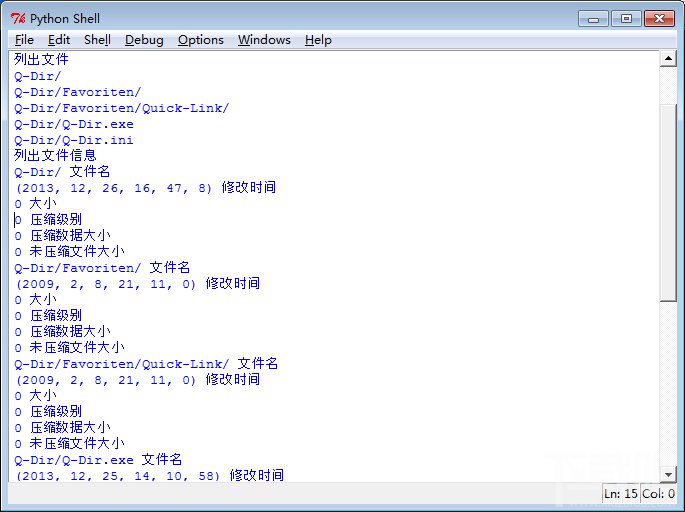使用Spring Data Jpa的CriteriaQuery一個陷阱
使用Spring Data Jpa的CriteriaQuery進行動態條件查詢時,可能會遇到一個陷阱,當條件為空時,查詢不到任何結果,并不是期望的返回所有結果。這是為什么呢?
例如下述代碼,當predicates為空時,返回結果總是為空。
public Page<VmhostWithRelationPO> listVmhostSpecWithRelationByPage(String name) { Specification<VmhostWithRelationPO> spec = (root, cq, cb) -> { root.join('user', JoinType.LEFT); root.join('tenant', JoinType.LEFT); List<javax.persistence.criteria.Predicate> predicates = new ArrayList<>(); ...... return cb.or(predicates.toArray(new javax.persistence.criteria.Predicate[0])); }; PageRequest pagable = PageRequest.of(0, 5); Page<VmhostWithRelationPO> page = vmhostSpecWithRelationDao.findAll(spec, pagable); return page;}
看下or的注釋就明白了,因為空條件總是為false,而and的空條件總是為true。所以,如果最后是and就沒有問題,只有or的時候有問題。
public interface CriteriaBuilder { /** * Create a conjunction of the given restriction predicates. * A conjunction of zero predicates is true. * @param restrictions zero or more restriction predicates * @return and predicate */ Predicate and(Predicate... restrictions); /** * Create a disjunction of the given restriction predicates. * A disjunction of zero predicates is false. * @param restrictions zero or more restriction predicates * @return or predicate */ Predicate or(Predicate... restrictions);}
所以正確的寫法應該這樣:
public Page<VmhostWithRelationPO> listVmhostSpecWithRelationByPage(String name) { Specification<VmhostWithRelationPO> spec = (root, cq, cb) -> { root.join('user', JoinType.LEFT); root.join('tenant', JoinType.LEFT); List<javax.persistence.criteria.Predicate> predicates = new ArrayList<>(); ...... return predicates.isEmpty() ? cb.conjunction() : cb.or(predicates.toArray(new javax.persistence.criteria.Predicate[0])); }; PageRequest pagable = PageRequest.of(0, 5); Page<VmhostWithRelationPO> page = vmhostSpecWithRelationDao.findAll(spec, pagable); return page; }
如果條件為空則返回一個空conjunction,也就是空的and,總是為true。
公司項目的代碼中常見這種寫法:
public Page<VmhostWithRelationPO> listVmhostSpecWithRelationByPage(String name) { Specification<VmhostWithRelationPO> spec = (root, cq, cb) -> { root.join('user', JoinType.LEFT); root.join('tenant', JoinType.LEFT); List<javax.persistence.criteria.Predicate> predicates = new ArrayList<>(); ...... if (predicates.isEmpty()) { cq.where(); } else { cq.where(cb.or(predicates.toArray(new javax.persistence.criteria.Predicate[0]))); } return cq.getRestriction(); }; PageRequest pagable = PageRequest.of(0, 5); Page<VmhostWithRelationPO> page = vmhostSpecWithRelationDao.findAll(spec, pagable); return page;}
也能正常工作,但是其實沒有必要在toPredicate方法中調用where,toPredicate只需要返回條件,外層會調用where。
public interface Specification<T> extends Serializable { /** * Creates a WHERE clause for a query of the referenced entity in form of a {@link Predicate} for the given * {@link Root} and {@link CriteriaQuery}. * * @param root must not be {@literal null}. * @param query must not be {@literal null}. * @param criteriaBuilder must not be {@literal null}. * @return a {@link Predicate}, may be {@literal null}. */ @Nullable Predicate toPredicate(Root<T> root, CriteriaQuery<?> query, CriteriaBuilder criteriaBuilder);}
本文作者: 鐘潘本文鏈接: http://zhongpan.tech/2020/07/20/035-a-trap-for-using-criteriaquery/
以上就是CriteriaQuery使用的一個陷阱的詳細內容,更多關于CriteriaQuery 陷阱的資料請關注好吧啦網其它相關文章!
相關文章:

 網公網安備
網公網安備